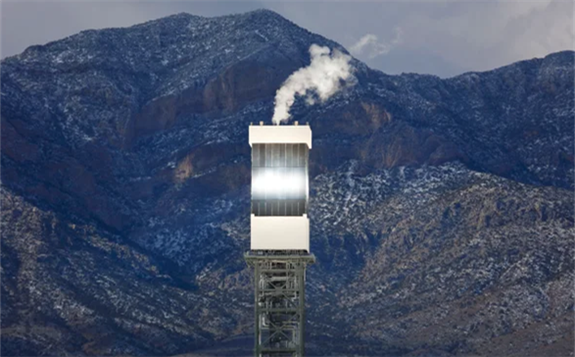Hybrid power systems — such as those that combine solar arrays with battery storage — could help the United States fight climate change and meet rising demands for electricity, according to new research.

But the findings by the National Renewable Energy Laboratory suggest more work needs to be done to better understand how to make the pieces fit together.
"These integrated power systems are increasingly being lauded as key to unlocking maximum efficiency and cost savings in future decarbonized grids," according to an NREL write-up of the work. But "there are still challenges in evaluating the benefits of hybrids with the tools used to help plan those future grids."
Caitlin Murphy, a senior NREL analyst and expert on hybrid energy systems, noted that a focus on single-technology power plants has "siloed" past research. The risk there is that engineers could overlook the potential benefits of a hybrid approach.
She said the Department of Energy has developed a "hybrid task force" involving NREL and eight other laboratories to fill in "gaps" in existing research, and called for more collaboration with the U.S. power industry.
"It's crucial to determine the value that they [hybrids] provide to the grid — in the form of energy, capacity and ancillary services — particularly relative to deploying each technology separately," Murphy said.
NREL research notes that in some cases, the coupling of solar power (which has no fuel cost) with storage batteries would allow more solar energy to be collected. Energy also could be shifted to periods where electricity prices are higher. Otherwise, power plants would have to buy electricity from the power grid, which would be more expensive and might not be renewable.
As solar energy grows, the possibility of combining it with battery systems "will be increasingly important to understand the impact of design parameters on economic performance," said Anna Schleifer, another NREL analyst who contributed to the research.
NREL's analysis noted that the economics of other renewable energy hybrid combinations should be explored for future use. One would be a power plant that combines solar and wind farms to deliver power over longer periods.
Another option would be to meld nuclear power with an electrolysis system. The plant could use nuclear electricity in periods of low demand to split hydrogen from water. It then could store the hydrogen to make electricity for periods when electricity is more expensive, rather than buying it from the grid.
Reprinted from E&E News with permission from POLITICO, LLC. Copyright 2021.E&E News provides essential news for energy and environment professionals.